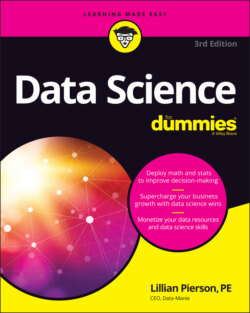Читать книгу Data Science For Dummies - Lillian Pierson - Страница 82
Analyzing extreme values
ОглавлениеOutliers are data points with values that are significantly different from the majority of data points comprising a variable. It’s important to find and remove outliers because, left untreated, they skew variable distribution, make variance appear falsely high, and cause a misrepresentation of intervariable correlations.
You can use outlier detection to spot anomalies that represent fraud, equipment failure, or cybersecurity attacks. In other words, outlier detection is a data preparation method and an analytical method in its own right.
Outliers fall into the following three categories:
Point: Point outliers are data points with anomalous values compared to the normal range of values in a feature.
Contextual: Contextual outliers are data points that are anomalous only within a specific context. To illustrate, if you’re inspecting weather station data from January in Orlando, Florida, and you see a temperature reading of 23 degrees F, this would be quite anomalous because the average temperature there is 70 degrees F in January. But consider if you were looking at data from January at a weather station in Anchorage, Alaska — a temperature reading of 23 degrees F in this context isn’t anomalous at all.
Collective: These outliers appear nearby one another, all having similar values that are anomalous to the majority of values in the feature.
You can detect outliers using either a univariate or multivariate approach, as spelled out in the next two sections.
